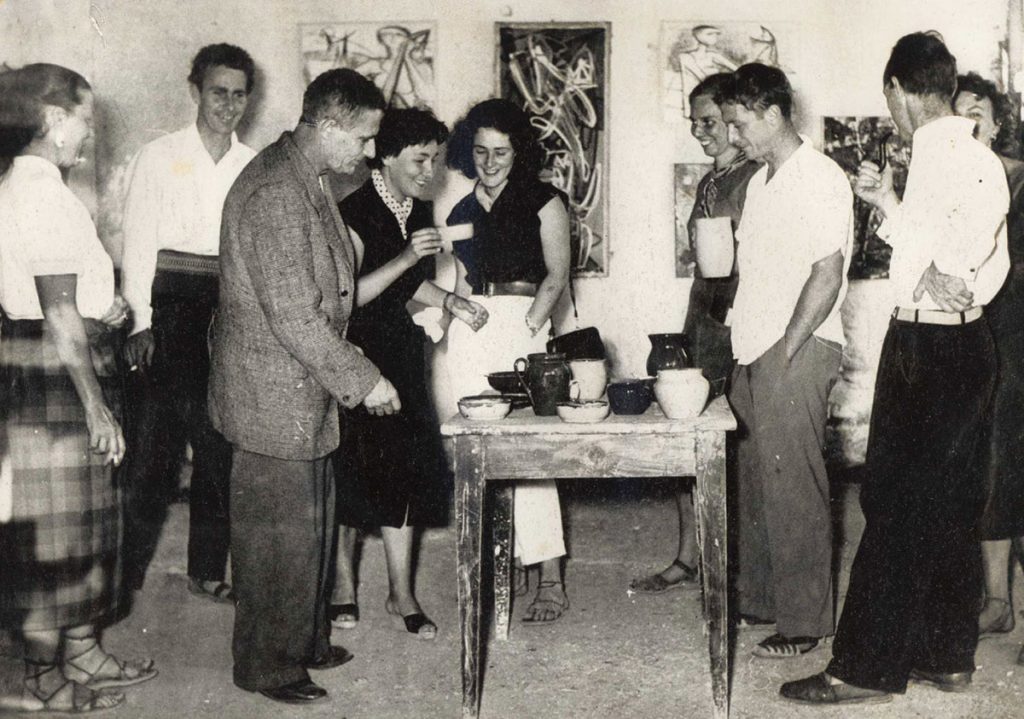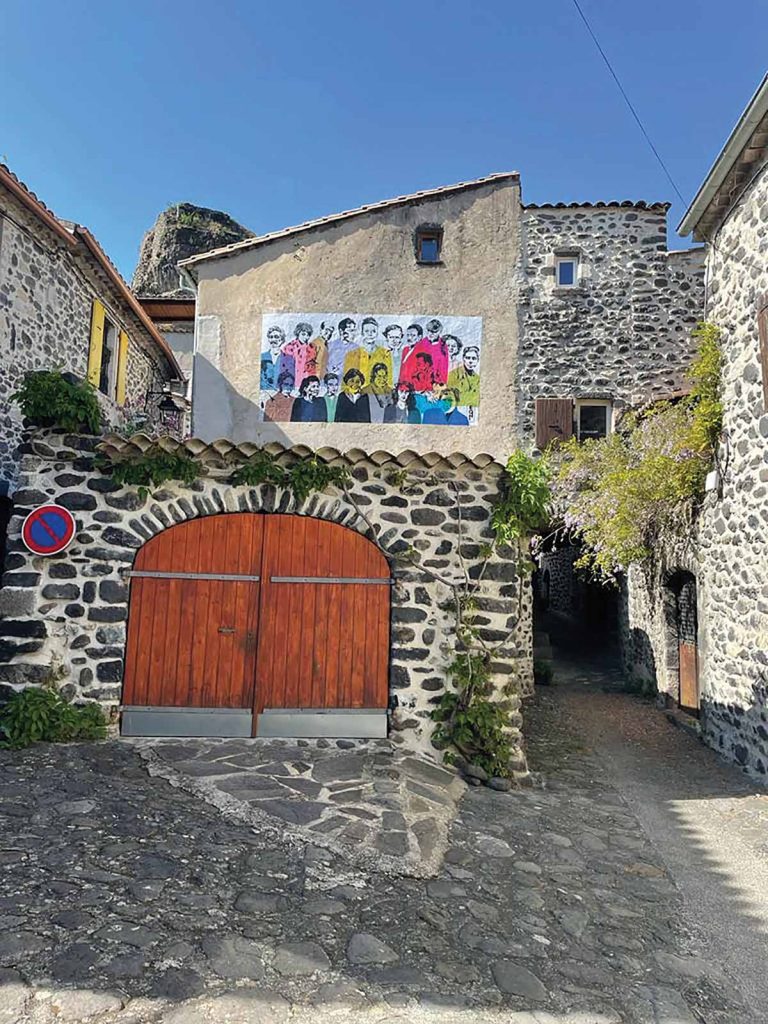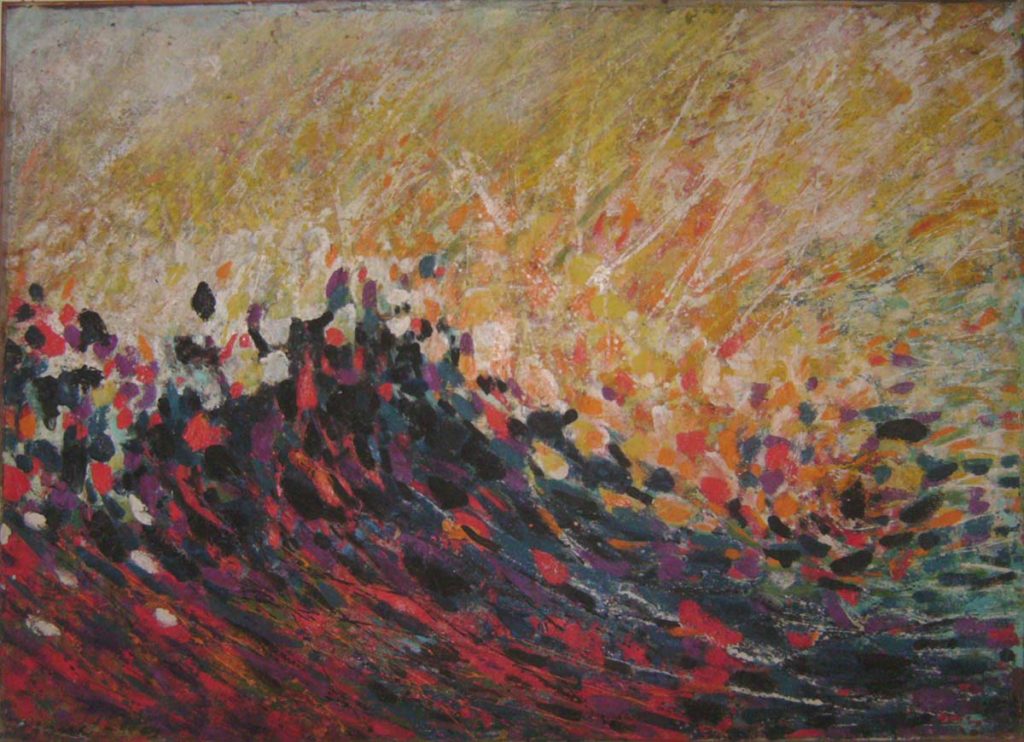Artists of D’Alba-La-Romaine 1950 – 1955
It was in 1948 that the artists of the School of Paris discovered in the newspaper Combat a call from the painter and theoretician André Lhote calling for artists and intellectuals to come and settle in the ruined houses of Alba-la-Romaine in the South of France: “What is an artist, the intellectual with one or two dozen surplus banknotes in the bottom of a … Continued
It was in 1948 that the artists of the School of Paris discovered in the newspaper Combat a call from the painter and theoretician André Lhote calling for artists and intellectuals to come and settle in the ruined houses of Alba-la-Romaine in the South of France: “What is an artist, the intellectual with one or two dozen surplus banknotes in the bottom of a drawer, who will recoil before the intoxicating work to be accomplished: saving a beautiful old house, miraculously surviving from war and universal contempt.“

The response was immediate, and from 1949 painters, sculptors, engravers and ceramists of all nationalities flocked to Alba-la-Romaine. French, English, Colombians, Chileans, Hungarians, Spanish, Americans, Dutch, and Swedish, fleeing the traumatic memory of the war and hoping for better days among the ruins of the hamlet of La Roche.
They have in common their Parisian life in Montparnasse, their studies with the great masters of that time as well as the friendship of the Americans Jackson Pollock and Sam Francis, before becoming established artists themselves with some being part of a workshop created by Stanley William Hayter.

All were in search of new values and a new meaning in their lives, and the call of André Lhote renewed their enthusiasm. They do not hesitate to leave everything to go live in a small village in southern Ardèche.
When they arrive in Alba-la-Romaine they are seduced by the beauty of the landscapes. The wild cliffs, the limpid water of the Escoutay river, the well-aligned vines, the wind in the hills, the blazing sunsets, the starry nights and especially the “white light” that they found nowhere somewhere else and which suddenly reveals itself to them when they leave the mountains and arrive in the plain of Alba-la-Romaine.
They buy about thirty houses, and thanks to the impulse of a man keen on history, Mr. Delarbre, and the competent dynamism of the mayor, Mr. Rieu, the hamlet of La Roche finds a new life. The artists begin to reassemble the ruins, sometimes without roofs or windows, with half-collapsed walls, like real builders, wielding trowels and hammers before finding their brushes and chisels.
The inhabitants, seeing this “invasion” arriving who speak a dozen different languages, was quite taken aback. Then as time went on they got used to it while some rejoiced that these characters create a little animation in the village.
Their behaviour and their habits continued to arouse a sometimes ironic curiosity. Their artistic work especially. However, good neighbourly ties are created in the village. The inspiring landscapes, the simple and peaceful life of the peasants, in harmony with nature, contribute to exchanges and encounters. Artists also discoveredthe treasures that the earth has hidden for centuries – the fossils of animals and plants and the vestiges of the Gallo-Roman and medieval times amazed them.
Their creativity was renewed, and they began a new life of intense work and shared joy, despite the harshness of the winters and the lack of comfort, without running water or electricity. Clothes were washed at a cold water tap in the street and the only bathroom in the village was available to women. They sleep in cots, sometimes with a solitary dog under the blanket to keep warm.
The mutual aid is great on the part of the inhabitants of the village. The mason helps with the restoration of the ruins, a farmer, with his team of oxen, goes to look for wood on the Coiron plateau for the sculptures of one or the other, the postman sometimes sculpts with them, in return some help with agricultural work. Beautiful friendships are formed. They have a deep respect for each other. Village women become “adoptive mothers”. They take the place of artist mothers who devote themselves fully to their work. These generous women marked the memory of the children of that time who never forgot them.
The chatelaine, Alice Braun, former star dancer of the Paris Opera, thanks to her kindness and generosity is nicknamed “Mammy d’Honneur”. A place of meetings and a place of celebrations, the castle is open to everyone, including cats and dogs wandering in the village.
The first exhibitions, from 1950 to 1952, took place at the public school at the same time as the votive festival, then the artists planned to find a permanent place to exhibit their works. It was at this time that Mr. Houdayer, who ran an architectural firm in Paris, with his wife, fitted out a permanent exhibition hall in a house they called “La Petite Chaumière” in reference to “La Grande Chaumière” in Montparnasse, drawing and painting academy that many artists have attended. La Petite Chaumière becomes a place of very lively exchanges, with debates on art and literature sometimes giving rise to tumultuous disagreements. However, the artists evoke the great respect that there is between them. No one felt superior to others, no one allowed themselves the slightest disparaging criticism of the work of a colleague.
From 1955, some of these artists who arrived in 1949 settled in nearby villages or returned to their country of origin. Others remain in Alba and their children still live in their parents’ homes. For years, artists have succeeded each other in Alba-la-Romaine, which has become a real “City of the Arts”.
The exhibition of works by these artists is open every day between 10.30am and 1pm and 2pm to 6pm until the 2nd of July 2023 at the Château de Vogüé and is organised by the association Vivante Ardèche and the children and friends of Alba. The nearest airports are Lyon and Marseille from where you can drive or get a train. Don’t miss this part of previously undocumented art history!
www.chateaudevogue.net









